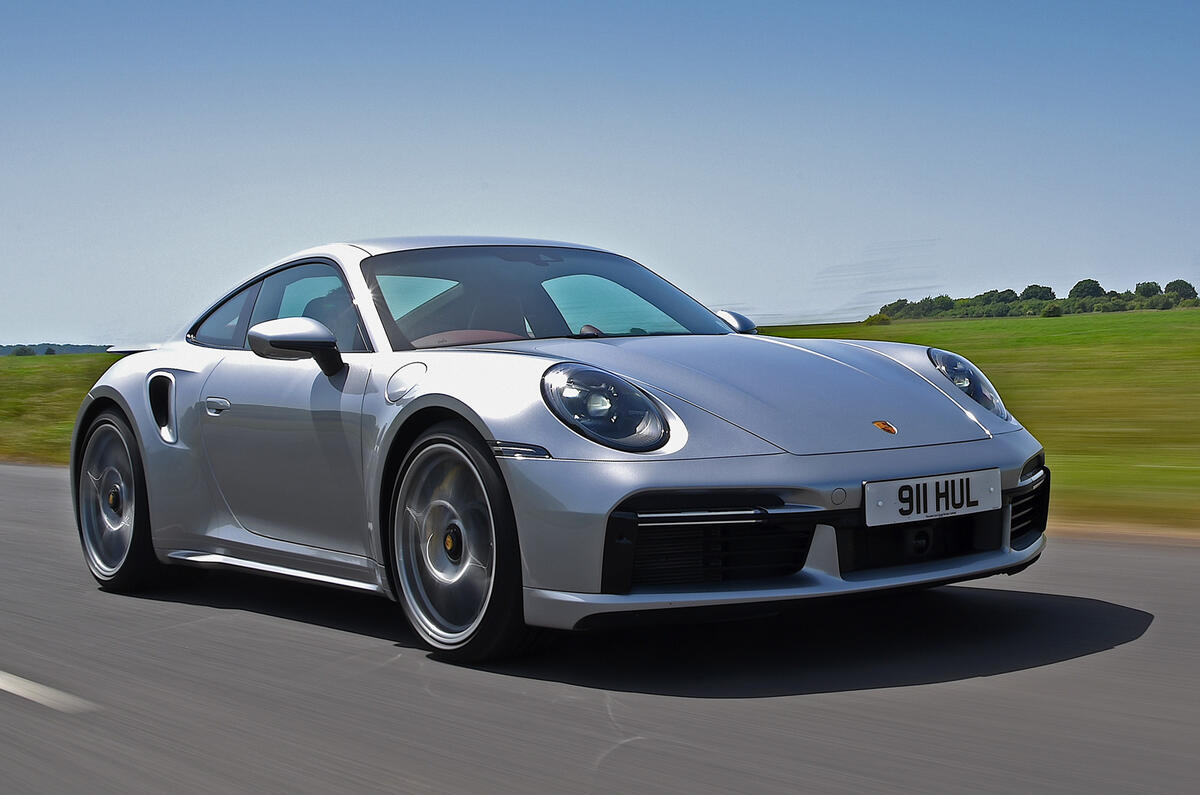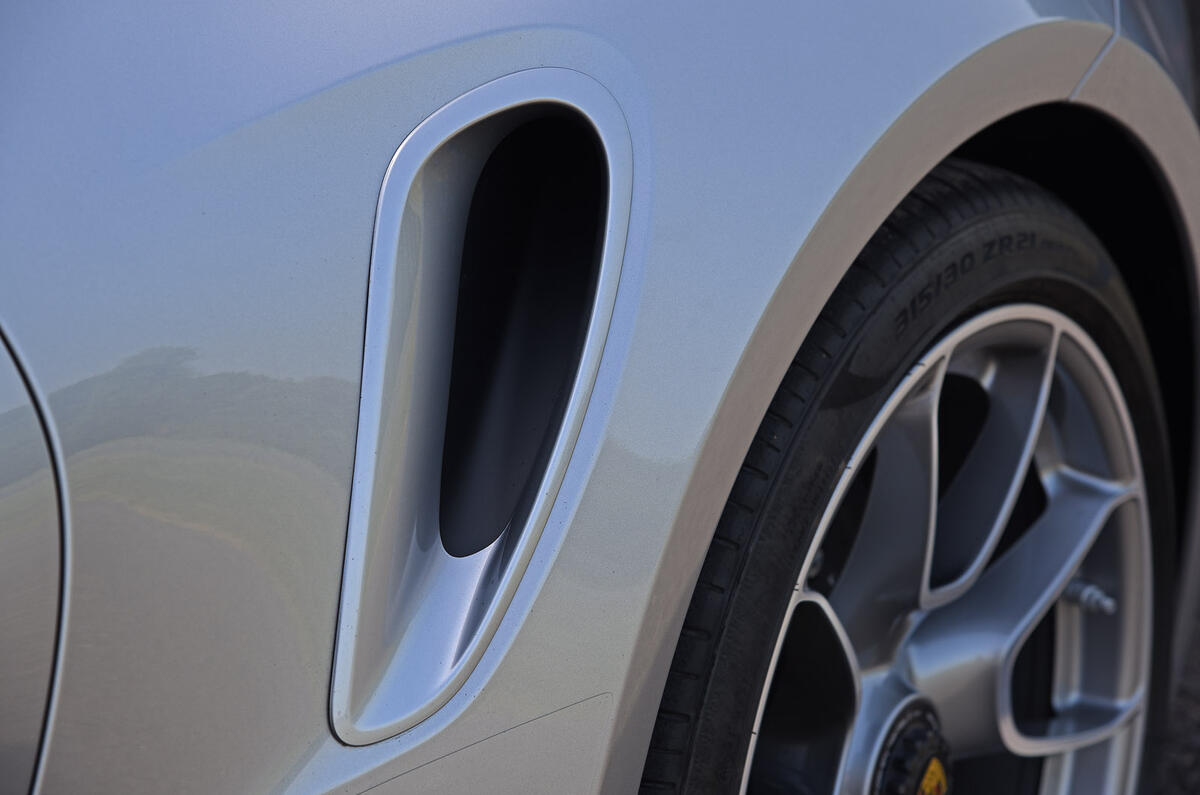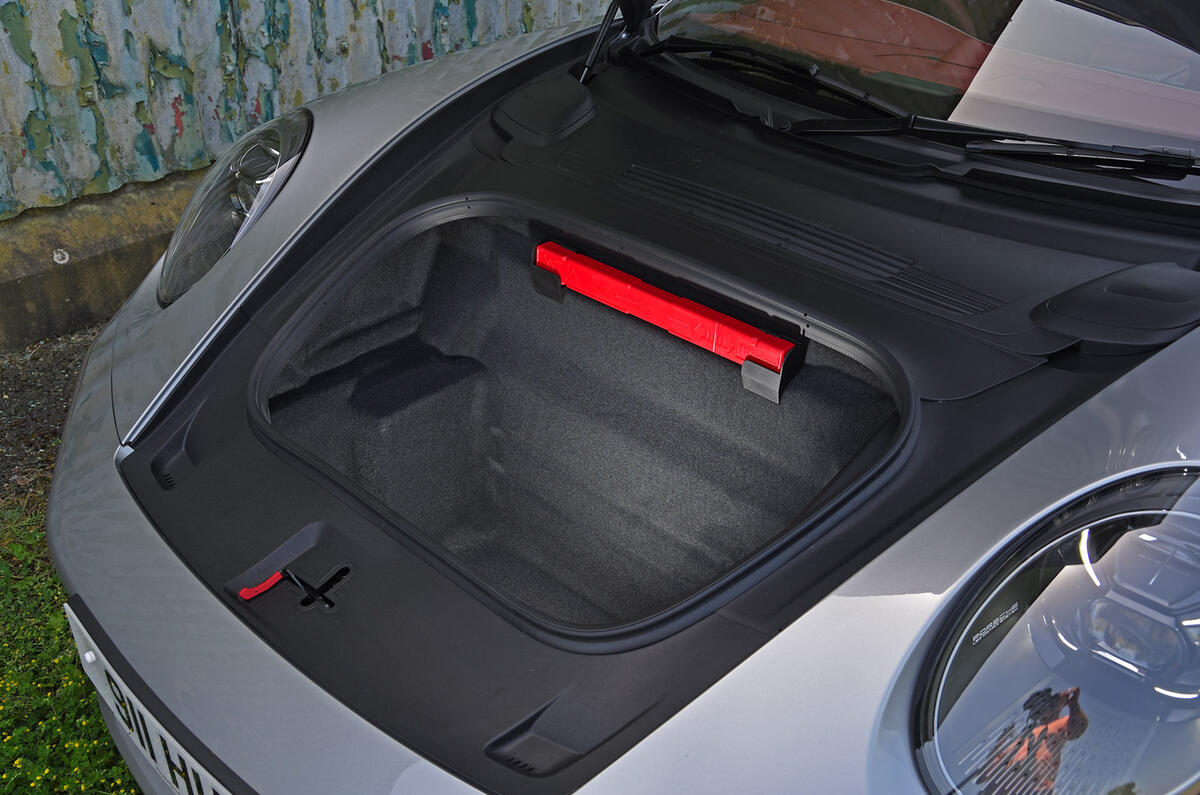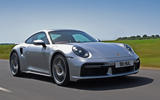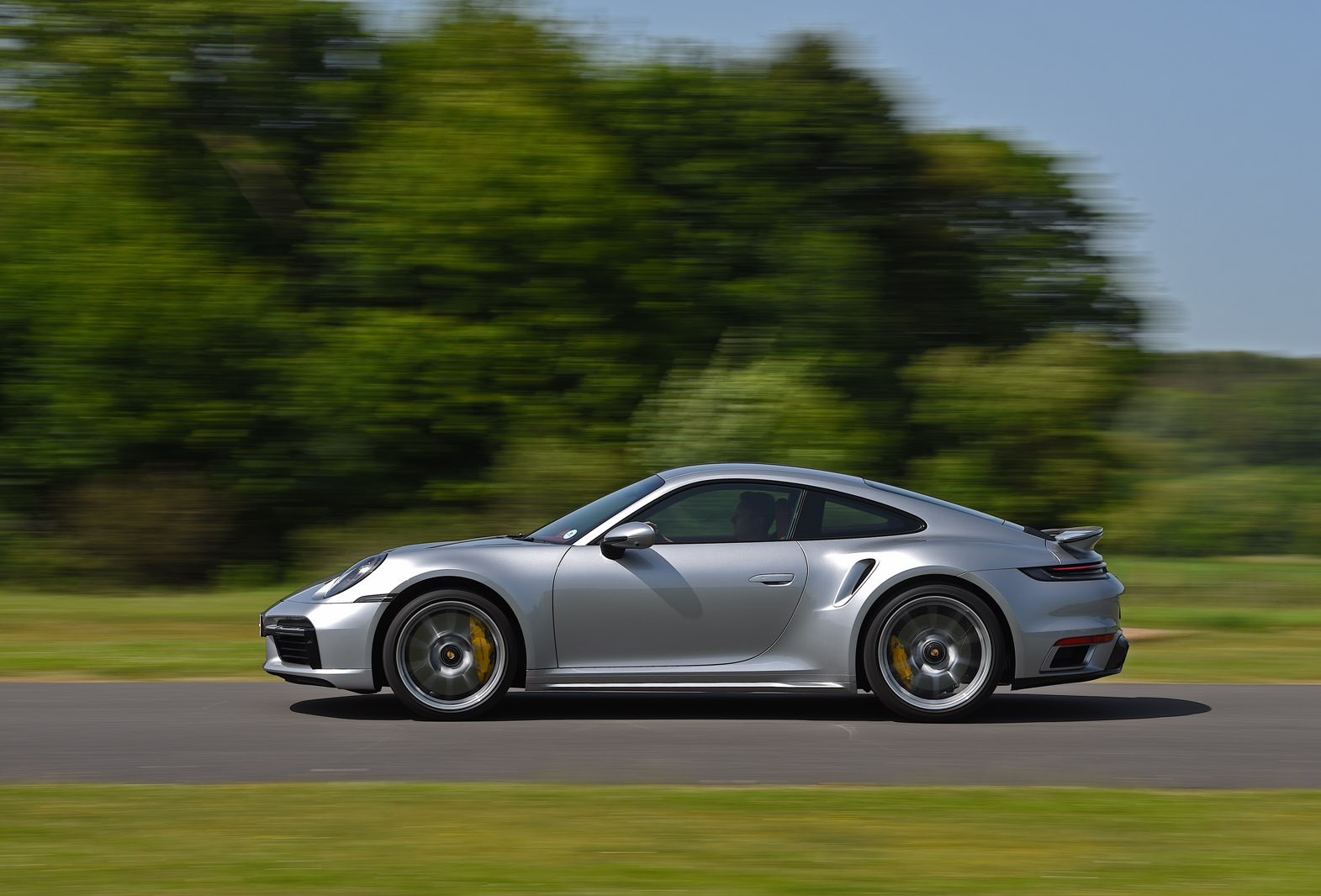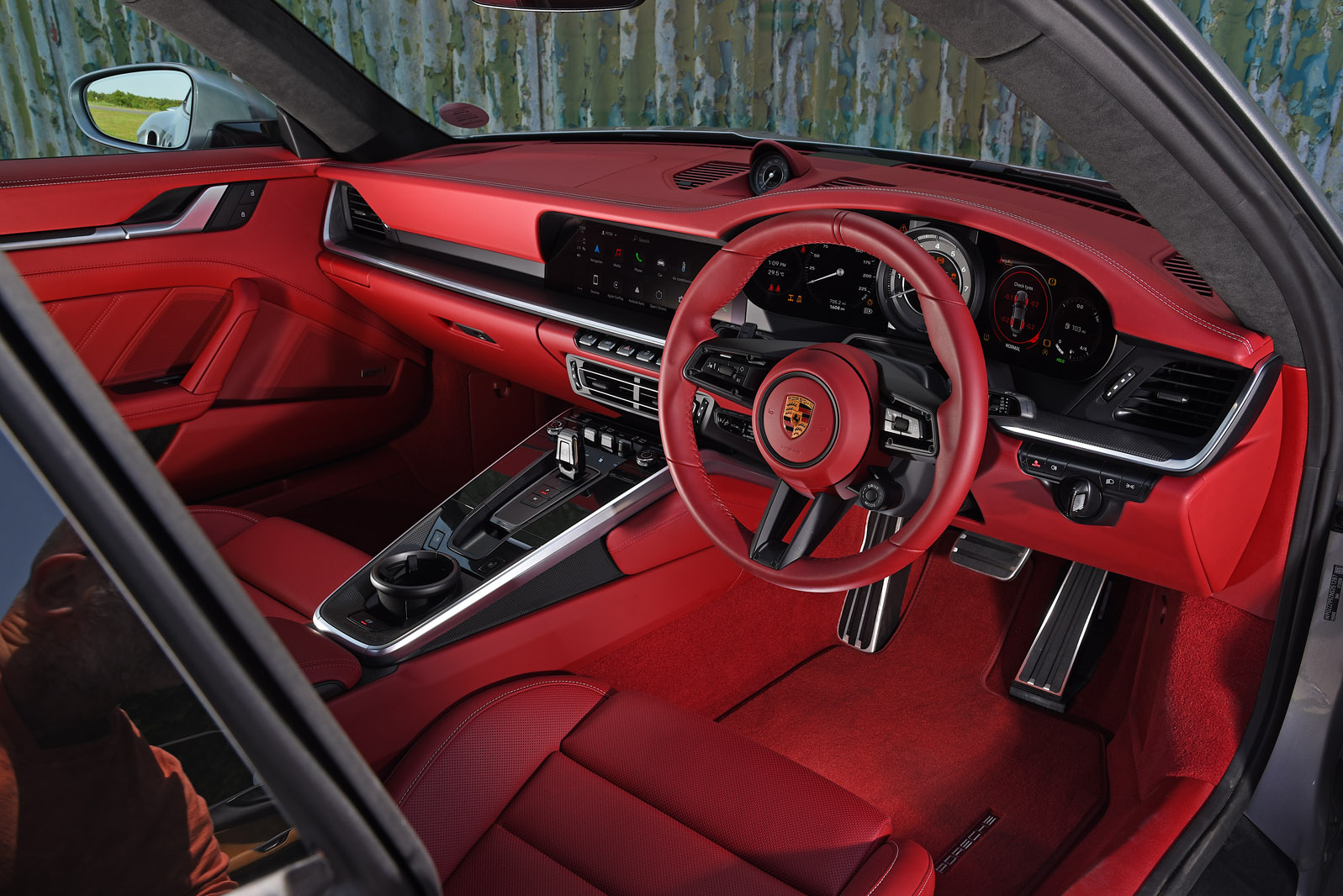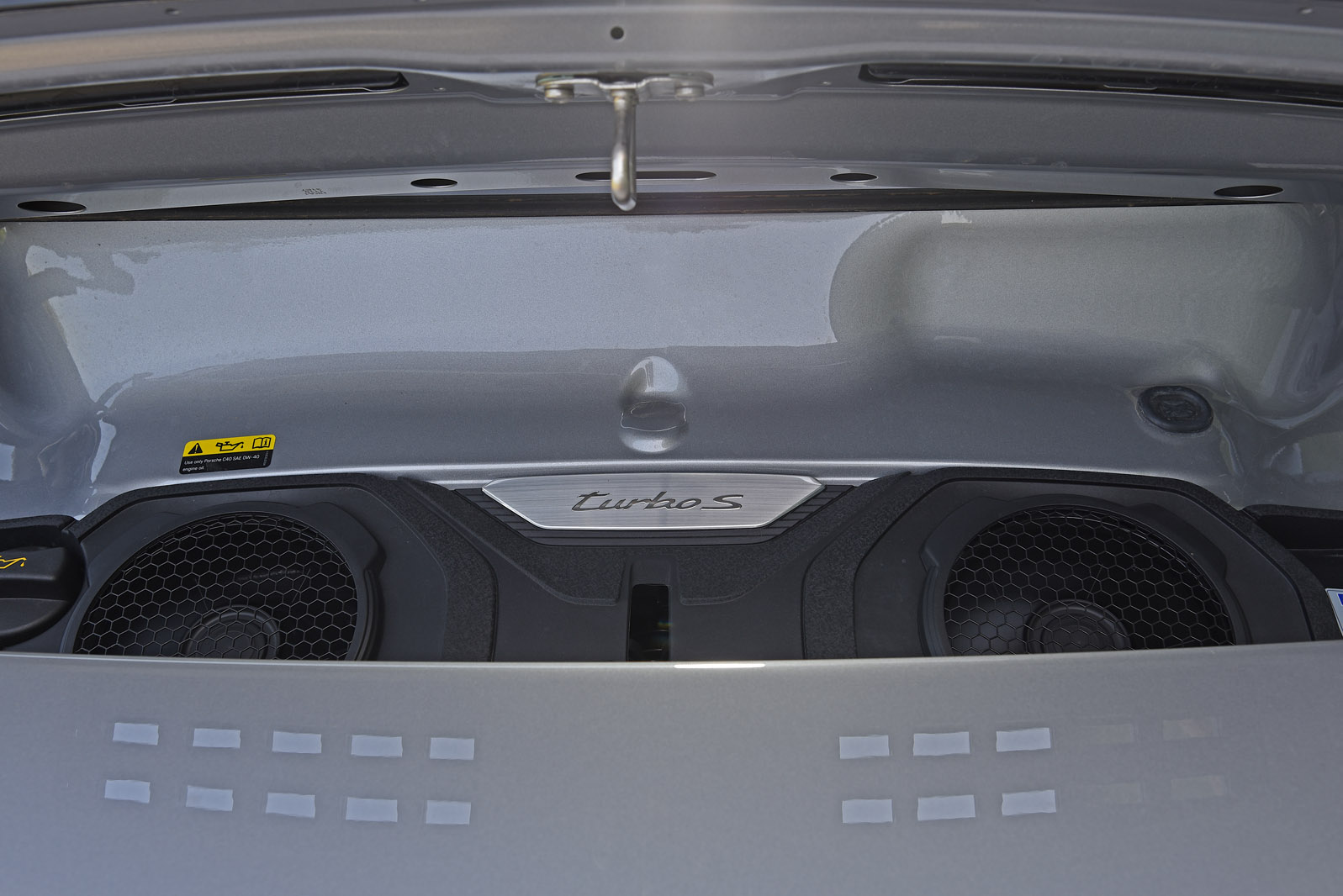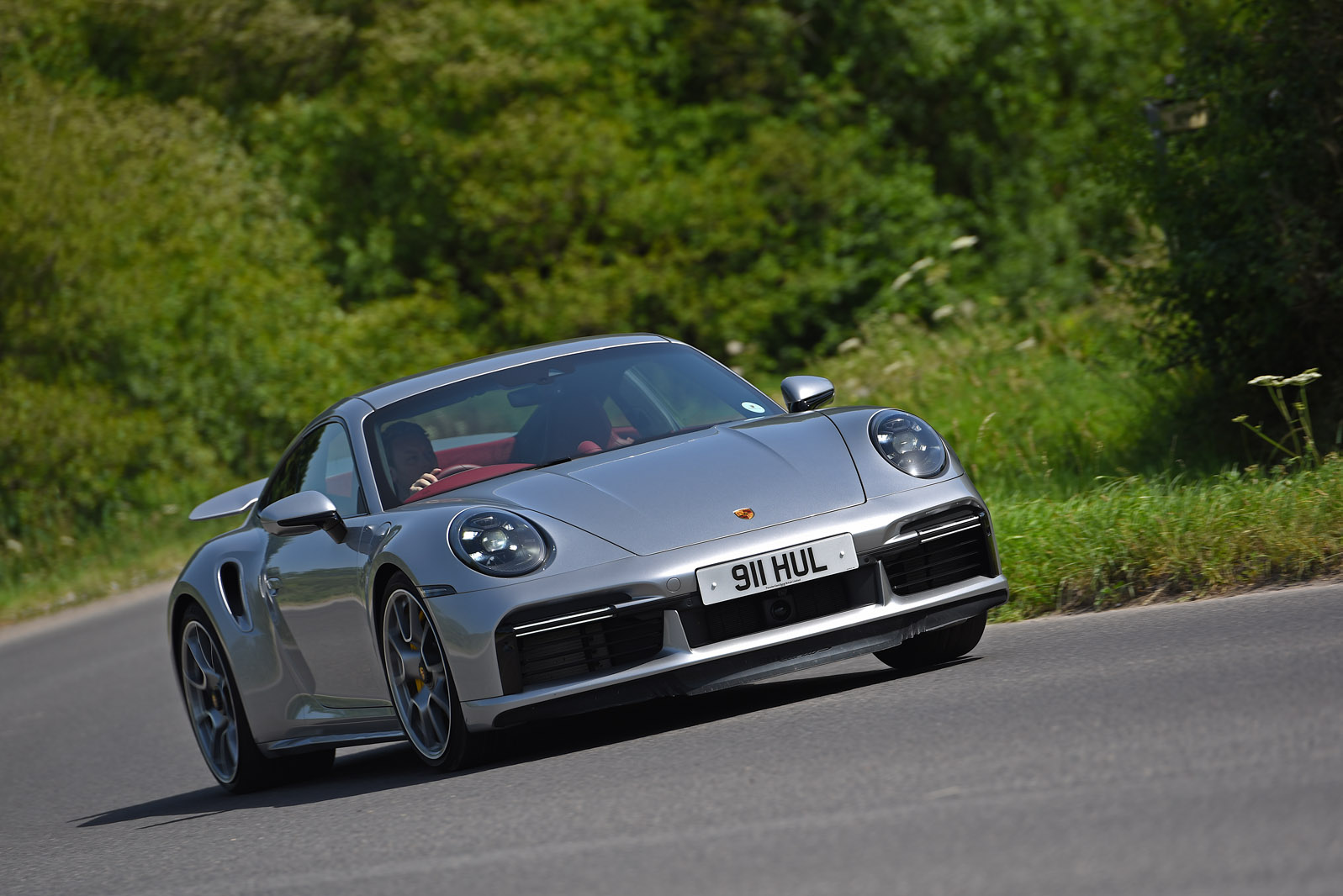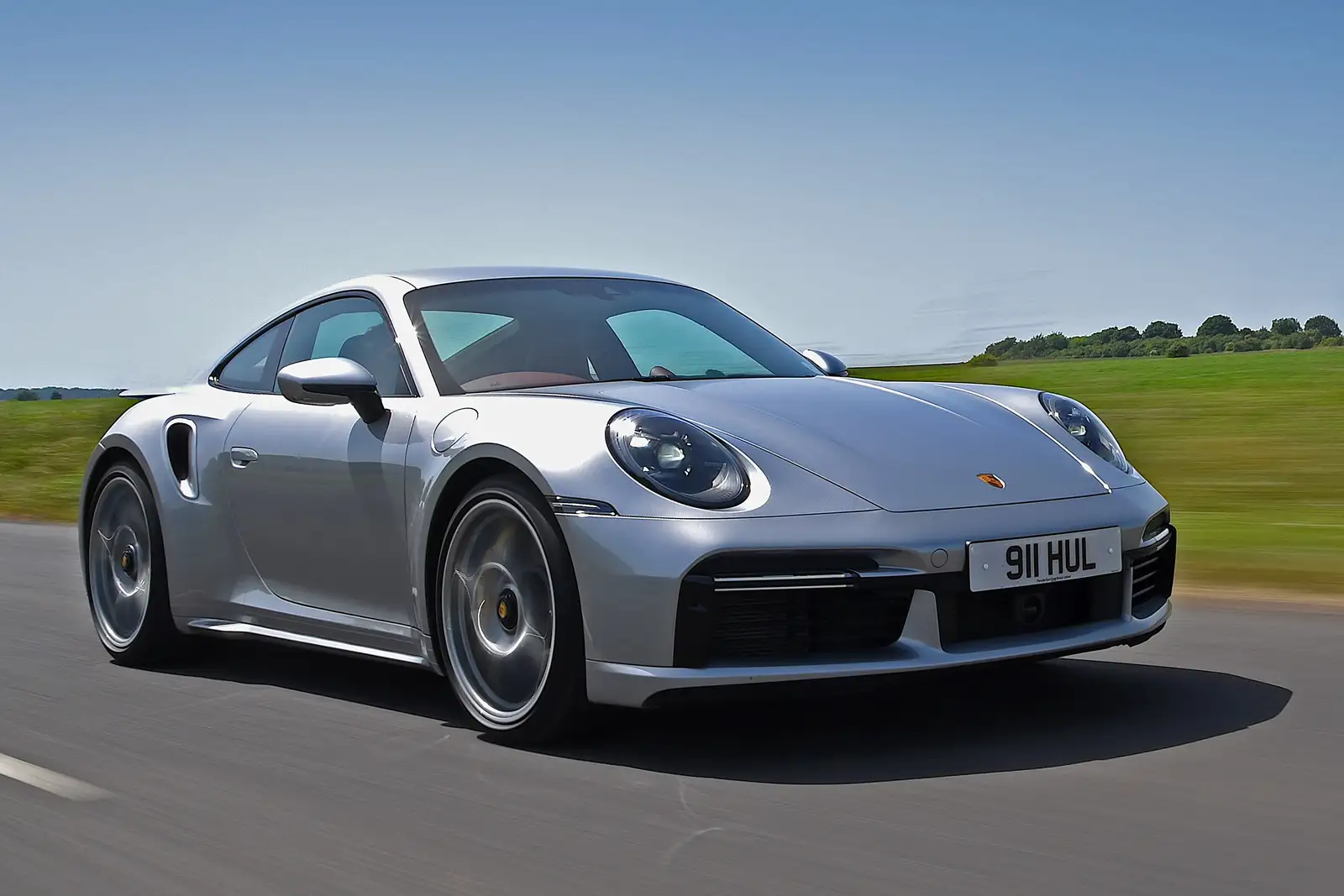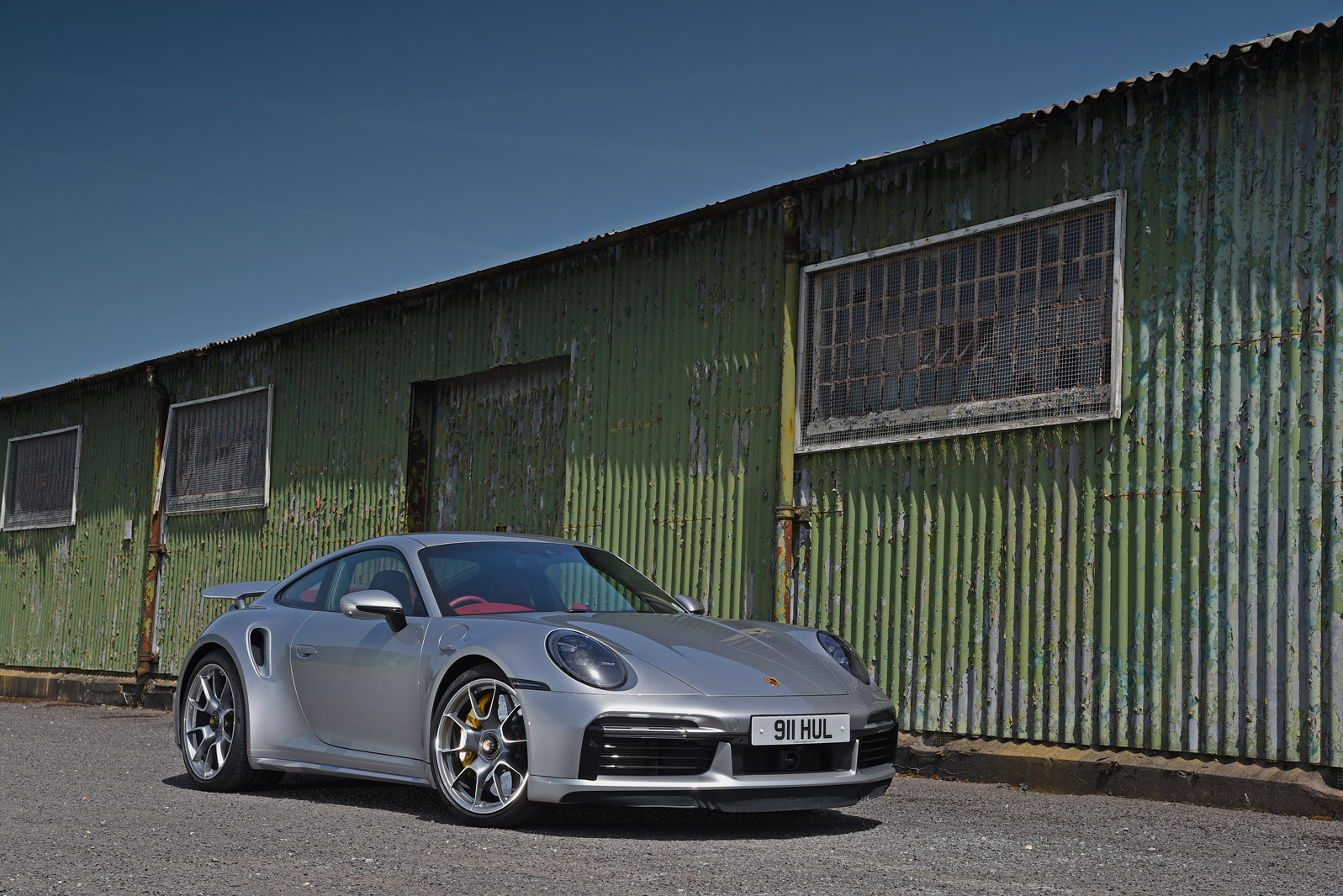As for point-to-point pace, this car remains something of a benchmark. There are moments when its 1640kg – closer to 1750kg when you account for driver and fuel – crystallises and the glut of mass at the rear feels uncomfortable, but they are fleeting. In general, the ability of this chassis to put so much power and torque onto an uneven, possibly damp road surface is uncanny, and its ability to sustain or increase momentum on even the most challenging B-roads utterly remarkable.
Comfort and isolation
Any 911 transmits a considerable amount of road roar into the cabin via its heavily loaded rear axle. This is one of the only remaining drawbacks to positioning the engine so far back in the chassis, but it is one you should take seriously if you intend to cover plenty of touring miles in your 911 Turbo S. Our test car’s 74dBA reading at 70mph (most mid-engined alternatives hover around the 78dBA mark at this speed) is enough to dent the car’s otherwise spectacular levels of year-round, multi-mission appeal. It’s also an excellent reason to avoid the Lightweight Package (see ‘Spec advice’, p41), which is guaranteed to exacerbate the problem.
Elsewhere, the Turbo S could hardly be more accommodating. The large glasshouse makes for a pleasing, airy ambience, and while this is the widest car of its lineage by some margin, it’s no more difficult to place on the road than any basic Porsche 911 Carrera. For something of such stirring performance potential, off duty it covers ground with ease, the suspension working with controlled pliancy.
Equally, when trundling, moments of true brittleness over threadbare surfaces are few, despite the substantial dimensions of the staggered wheels and the paucity of sidewall. As for low-speed driving, neither do you really need to worry about dinging the front splitter, as you do with many of the Porsche’s mid-engined classmates. However, a nose-lifter is available as an optional extra for those with steep driveways, or simply for peace of mind.
At this point, we must reiterate that our test car was not optioned with the lower-riding PASM Sport suspension set-up. Several testers have previously driven a Turbo S so equipped and there’s no doubt that, while improving the steering response and agility of the car, it erodes ride quality to the extent that it feels only just acceptable. Far better, in our opinion, to stick with the standard-fit PASM suspension, whose firmer damper setting is more than adequate for fast road driving and whose default rates are very nicely judged.
That word of warning aside, and with the fair caveat of cabin noise, it’s fair to say that no other car in this sphere of price and pace is quite as usable as the 911 Turbo S.
Track Notes
The Turbo S produced a dry lap time that matched the 911 GT3, despite being some 225kg heavier and wearing not semi-slick Michelin Pilot Sport Cup 2 tyres but Pirelli P Zeros intended only for road use.
So great is the Turbo S’s traction potential that it allows the engine to unload almost all of its incredible reserves throughout much of the lap. Indefatigable brakes that can be punched hard help, but it’s the car’s ability to exit second- and third-gear corners with slingshot intensity that makes it so fast. Body control is also excellent, and this allows you to hold the throttle wide open through committed direction changes in the middle gears.
That said, the Turbo S still doesn’t rotate as easily as some other 911s and sometimes requires a degree of patience before you can let the powertrain rip. High traction levels can also lull you into a false sense of security, and if the rear axle does slew wide, it can do so quite suddenly – just enough to keep you on your toes.


